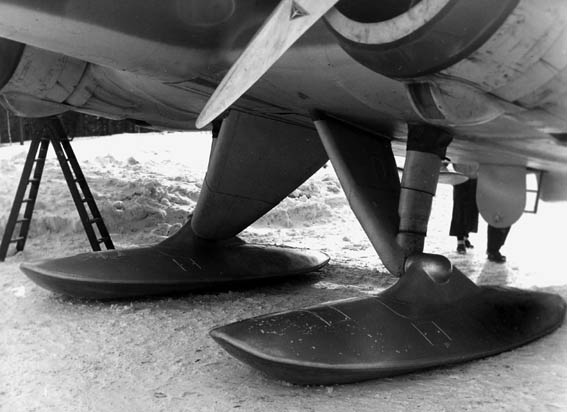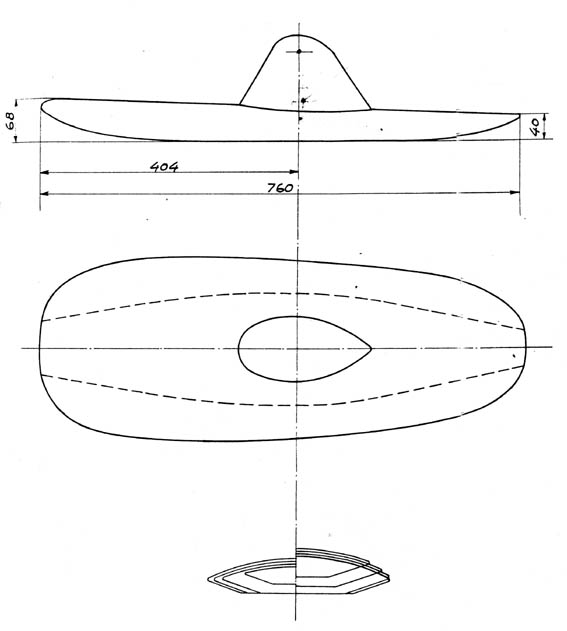 | ||
 |
 |
 |
 |
 |
 |
Junkers Ju 86 on skis in Sweden © Lennart Andersson |
Due to a lack of suitable airfields Swedish military aircraft were often fitted with floats during the summer period for operation from lakes and rivers, and in the wintertime skis were fitted. This practice continued until the early 1940s.
When the first Swedish Junkers Ju 86K bombers (Swedish designation B 3) were ordered in 1936 it was specified in the contract that a ski undercarriage was to be designed for the aircraft. Two pairs of skis were ordered from Dessau for winter tests. The wooden parts were made by Propeller-Hersteller Heine and arrived in Dessau in January 1938. The skis were then completed and tried on one of the Swedish aircraft, Ju 86K-4 c/n 0860361 (B 3A s/n 143), before it left the factory. 
After arrival in Sweden this aircraft was assigned to the Swedish air force test establishment (Försökscentralen) at Malmslätt, Linköping. It remained there until July 1941 and was the subject of a number of tests, including ski trials. The first tests with the Junkers-made skis were made at Boden in northern Sweden, in April 1938. Take-off and landing was accomplished within 180-190 meters on a 50 cm thick layer of snow with hard surface. Tests were resumed in April 1939, now with a modified type of ski acquired from Junkers. Polish-made skis from the Szomanski firm were then ordered for comparative tests, but when the war broke out in September they were seized by German authorities at Gotenhafen and were never delivered to Sweden. In February 1940 metal fairings for 20 pairs of skis, later reduced to 14 pairs, were ordered from Svenska Karosseriverkstäderna AB at Katrineholm and they were delivered in December 1940. However, snow clearance techniques soon developed far enough to render skis unnecessary and eventually the skis acquired for the B 3 were never used. 

|